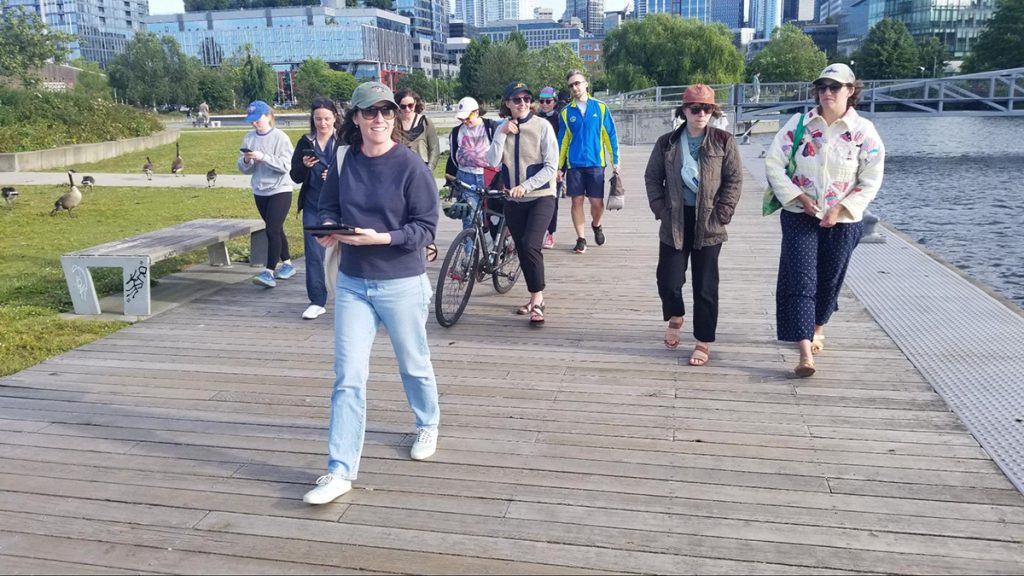
Future Tides Founder & Editor Cara Kuhlman leads a free walking tour along the Seattle waterfront June 12, 2024. Photo: Guillaume Wiatr
Why walking tours offer another medium for local journalism
Let’s step outside and take a walk with our community
Journalists are already guides. Through written word, audio, and video we take people to places and explain what’s happening in their communities.
But what if journalists also became walking tour guides? Well, I’m giving it a try!
As I build a beat focused on the Pacific Northwest’s maritime community, I’m learning a lot about our waterfronts, local economy, and key issues. It won’t all make it into a web story, email newsletter or an interview. And even if it did, its reach is limited. Everyone takes in news and information differently.
So I thought, what about using tours to share that news and information, and learn what people are curious about?
Inspired by Untapped New York, I incorporated tours into my business plan for Future Tides, a maritime media startup I founded in 2021. As a publication with a strong sense of place (the Pacific Northwest’s waterways) and a niche (people who work, play and live on the water), I originally viewed tours as a potential source of revenue, similar to how other outlets leverage events.
As I developed a minimum viable product (MVP) for the tours, I quickly realized that, beyond revenue, they also offer an avenue for community engagement and inform what Future Tides’ covers as a tiny newsroom.
Here’s my theory on how tours can support a publication’s revenue, audience development, and editorial content:
- Revenue — Tours can be ticketed, included as a membership benefit, or underwritten through grants or sponsorship.
- Audience engagement and development — Existing audience members attend tours, deepen their relationship and understanding of coverage. At the same time, tours offer an introduction for potential audience members who can sign up to learn more. Both groups get to ask questions, shape the tour content, and connect with each other.
- Editorial content — Tours start with research and local expertise but attendee input informs what topics resonate, or don’t. This can help newsrooms prioritize. It’s also an opportunity to be transparent, demonstrate you’re listening and directly respond to questions.

Operational sustainability is also top of mind. I’ve experienced burnout and other challenges that come with producing events (yes, it is a production). My theory is that tours can be made more replicable, and therefore more sustainable. They could even compliment other events.
Come along as I skirt the line between experimenting with a new model for journalism, and learning an entire new industry (tourism). My RJI Fellowship project will share learnings from the Future Tides pilot, other case studies, and provide resources for other journalists or outlets to join the experiment. The more of us testing these theories, the more quickly we might be able to unlock a new tool for the modern media toolbox.
Subscribe to receive occasional email updates about my work, including new RJI article alerts.
I’m looking for help mapping the local media and tourism landscape. If you know anyone that fits into one of these buckets, please let me know:
- Other publications or journalists (besides Untapped New York, Newsberg and Future Tides) who are already giving walking tours.
- Local publications/newsrooms/outlets who might be interested in testing out tours.
- Examples of “tours for locals” that aren’t about history.
Cite this article
Kuhlman, Cara (2025, Aug. 11). Why walking tours offer another medium for local journalism. Reynolds Journalism Institute. Retrieved from: https://rjionline.org/news/why-walking-tours-offer-another-medium-for-local-journalism/
